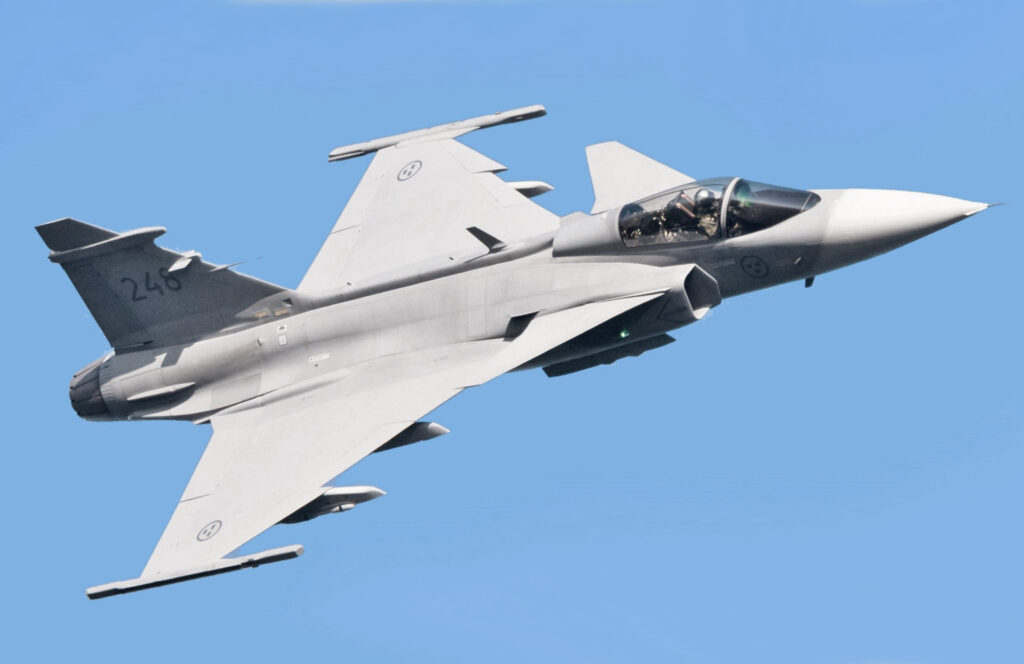Ukraine has officially announced its ambition to acquire up to 150 Saab Gripen fighter jets from Sweden, marking what could become the most significant combat aviation agreement in its history. President Volodymyr Zelensky stated that the first aircraft are expected to arrive as early as next year, describing the deal as a “historic step” in strengthening Ukraine’s air capabilities.
“Together with Sweden, Ukraine will significantly increase its combat aviation. This is an ambitious task, and it must be accomplished. Gripens for Ukraine are part of our security guarantees. These are the air forces that will be able to protect our sky one hundred percent,” Zelensky declared.

The Agreement and the Variants
Initial discussions reportedly focused on the new Gripen-E variant, recently inducted into service with the Swedish Air Force. However, given the production schedule and Sweden’s own procurement needs, Ukraine might instead receive the older Gripen C/D models first. This discrepancy has raised speculation about the final configuration of the deal and whether both versions could eventually be part of a phased delivery plan.
Saab’s Production Surge
The Swedish defense company Saab AB has already expressed readiness to increase production rates if the Ukraine deal proceeds. CEO Mikael Johansson told Reuters that the company is currently capable of manufacturing 20 to 30 aircraft annually, but plans to double output if the contract is confirmed.
“If necessary, we can sharply increase production rates,” Johansson said, adding that Saab is also exploring new production sites outside Sweden and Brazil, with Canada under consideration as a potential location.
A Capable Yet Complex Addition
The Gripen is recognized globally as a cost-effective, multirole fighter, designed for ease of maintenance and operation from short or improvised airfields. However, the belief that introducing a single fighter type could dramatically change the course of a conflict is an oversimplification. True air superiority requires a comprehensive ecosystem—including early-warning aircraft, network-centric warfare systems, ground support, and advanced munitions integration.
While the Gripen’s affordability, agility, and electronic warfare capabilities make it an attractive option, Ukraine will still face the challenge of building and sustaining the necessary operational infrastructure to support such a fleet.
Conclusion
If finalized, the Gripen acquisition would represent a historic leap in Ukraine’s air combat capabilities and industrial partnerships. Yet, as analysts often note, modern warfare depends not only on the aircraft themselves but on the ecosystem that empowers them. Whether the Gripen becomes a true game changer or just hype will depend on how effectively Ukraine develops that supporting structure in the coming years.

